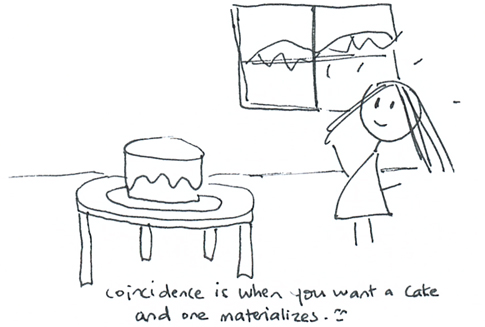This past Wednesday, I met a homeless fellow who’d just gotten out of jail and wants to stay out.
The next morning, there it was. A front page New York Times article talking about a program that’s reduced ex-inmate recidivism rates by 16-22% compared to the norm.
Ooh, funny coincidence! Right?

Maybe not so.
It’s more likely the case of selective perception. Selective perception is a cognitive bias where we filter out and only choose to see the things we’re interested in. It’s drawn from our preferences and past experiences. This makes sense, because if we didn’t have any filters, we’d be totally overloaded with external stimuli.
Think of horoscopes. Chances are, when you read them, they seem like they are describing you, right? Mine does! I bet if I was to take another sign and show it to you again, you’d find facts that describe you too. 🙂
So how can you use selective bias to your advantage?
For starters, be aware of that you’re probably going to be preaching to the choir. Studies have shown that people who already buy a particular brand are more likely than non-purchasers to notice and have a positive reaction to advertising for that brand. This is important to note when doing market research too. The Rosser Reeves Fallacy shows that, when evaluating the effectiveness of an advertising campaign, it was actually that purchasers of a brand were more aware of the ads, rather than awareness of the ads causing people to be more likely to buy that brand.
Messages that fit with what a person already “knows” about a brand / product can be very effective. Their beliefs amplify the effect of your message so that it has a stronger effect. Of course, you need to make sure that you have done your research into what people really think about your products, since your assumptions of what their views are may be off base.
It generally isn’t a good idea to work against people’s ingrained biases unless it’s deemed necessary to try to reposition a product or brand. One analogy would be attempting to swim against a very strong current. You’ll need to put in extra effort, and changes in their opinions may take a very very long time. The further your message is from their existing beliefs, the more likely it is to cause cognitive dissonance, which will likely be resolved by dismissing your message.
Still interested in how to change existing beliefs and behaviour? I’m separately working on posts on how to change behaviour, and what it takes for lasting change. Since those will take longer, this one first. 🙂


What a COINCIDENCE I was just writing about built in biases as well.
It’s interesting to see the relevance of conforming to people’s expectations and biases in marketing. I was just writing this weekend about conforming to player expectations in games. Yes – you can try to be cool and do something “new” and “different” or even “theoretically better” – but you pay a cost when you swim against the current of the player’s expectations. Ultimately there’s nothing wrong with swimming against the tide if you’re trying to set a new trend, or do something amazing – but doing it without a significant gain is just going to marginalize your game.
Hey Wyatt! I was JUST thinking of you recently! 😉 Agreed, with product design and game design, going against the norm is risk — especially if you’re doing it just to be novel For me, the gamble for whether to do something non standard comes down to this – did status quo arrive from arbitrary reasons or technical constraints (QWERTY keyboards), or was it already something relatively intuitive or based on shared common knowledge (how a chef knife should be shaped, basic characteristics for a warrior class and the types of equipment they can have available.) 🙂